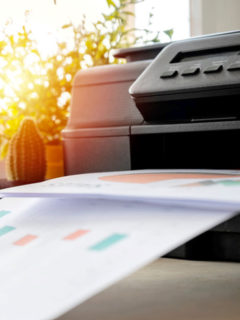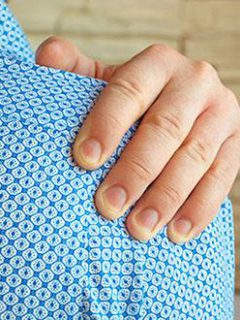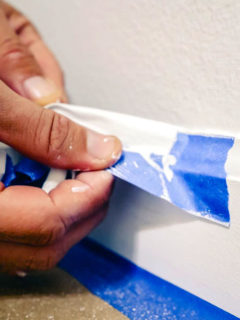Plastic: you know it as a versatile, flexible and lightweight material. Advantages that are unmatched in the world of raw materials. We see plastic as the best solution for packaging products in a light and compact way. But how does plastic get recycled? Is clear better than coloured? And what about bioplastics? These are just some of the five most frequently asked questions in the wonderful world of plastics. Are you curious about the answers? Then please read on.
.
1. What are the benefits of recycling plastic?
There are many different plastics, but they all have one thing in common: oil as a raw material. Currently, about 6% of the world’s oil is used to make plastics. Of this, 35-45% is turned into plastic packaging.1 The vast majority of plastic is theoretically recyclable, provided you don’t mix the different variants and sort them properly.2
Somewhat less uplifting news: we are consuming oil much faster than it is naturally produced. This process can take several million years. This is why oil is a raw material that must be used sparingly. Fortunately, there are several solutions. First of all, we can choose to reduce our plastic consumption. For example, if you opt for a more compact crate, you need less (plastic) cushioning. Secondly, you can also replace plastic with another material. Paper and cardboard, in particular, stand out as environmentally friendly alternatives. And finally, of course, you can recycle: l'one of the best solutions for creating a circular economy. Recycling plastic allows:
- Consume less oil – which will reduce the pressure on existing oil stocks.
- Reduce CO2 emissions – recycling plastic uses less energy than producing new materials.
- Limit waste – if we collect and sort plastics more intensively, we will produce less waste.
2. Is clear plastic easier to recycle?
Often bubble wrap or plastic bags are green due to a dye added by the manufacturer. This green appearance is a clear indication to the consumer that the plastic is made entirely (or partly) from recycled materials. The disadvantage is that the plastic is more difficult to recycle at a later stage. The green dye thus ‘pollutes’ the process. So, if you’re smart, you should always opt for recycled plastic packaging that is completely transparent.
Examples of this type of recycled, transparent plastic are bubble bags and bubble wrap. We use these materials, among other things, to package products and protect them from impact.
It is not possible to tell the difference between recycled and virgin plastic if both are transparent . It is therefore always advisable to clearly state in your communication that you have opted for an environmentally friendly packaging material. This way, the end customer knows that your transparent packaging is much “greener” than it first appears. This is good for the environment and, of course, for your company’s image.
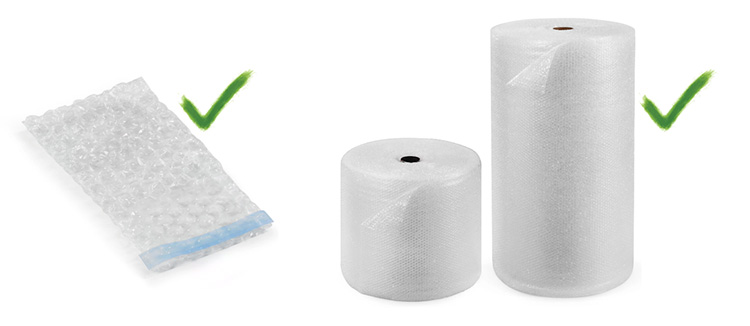
3. What types of plastic can be recycled
In theory, all plastic packaging can be recycled. A small exception is packaging that has contained hazardous chemicals, for example. Such packaging is often processed in a separate sorting cycle. Back to “standard” packaging… One of the conditions for recycling is that the different types of plastic are strictly separated. By separating them, the quality of the final recycled product is guaranteed. To find out what type of plastic it is, look for a small triangular symbol on the packaging with a number in the middle. Here is a list of the easiest (and most commonly recycled) plastics.
| Type of plastic |
Features |
Applications |
Polyethylene terephthalate |
– Transparent and glossy | – Transparent bottles – Blister boxes |
.High density polyethylene |
– Opaque – Hard – Very strong |
– Strong bags and pouches – Cans |
Vynil polychloride |
– Lightweight – Flame retardant – Electrical, thermal and acoustic insulation |
– Toys – Tapes – Automotive parts – Flooring |
Low-density polyethylene |
– Bubble bags – Zip bags |
|
Polypropylene |
– Similar to PE, but much stronger – Bright, colorfast and heat resistant |
– Furniture – Adhesive tapes – Boxes – Stacking bins |
Polystyrene |
– Impact resistant – Hard and smooth surface |
– Foam – Disposable cutlery – Cups |
4. How is plastic recycled?
First, plastics must be sorted accurately by type.³ Part of this responsibility falls on households and businesses. Another part is done in sorting centres using automated processes. This is the case, for example, for all the materials we throw together in the PMC bag.
Once the plastic has been separated by type, it can be shredded or ground into granules and then washed. Finally, the pellets are melted and processed using various techniques. They are then used to make new products. Good to know: the more households and businesses sort, the more this process can be repeated.
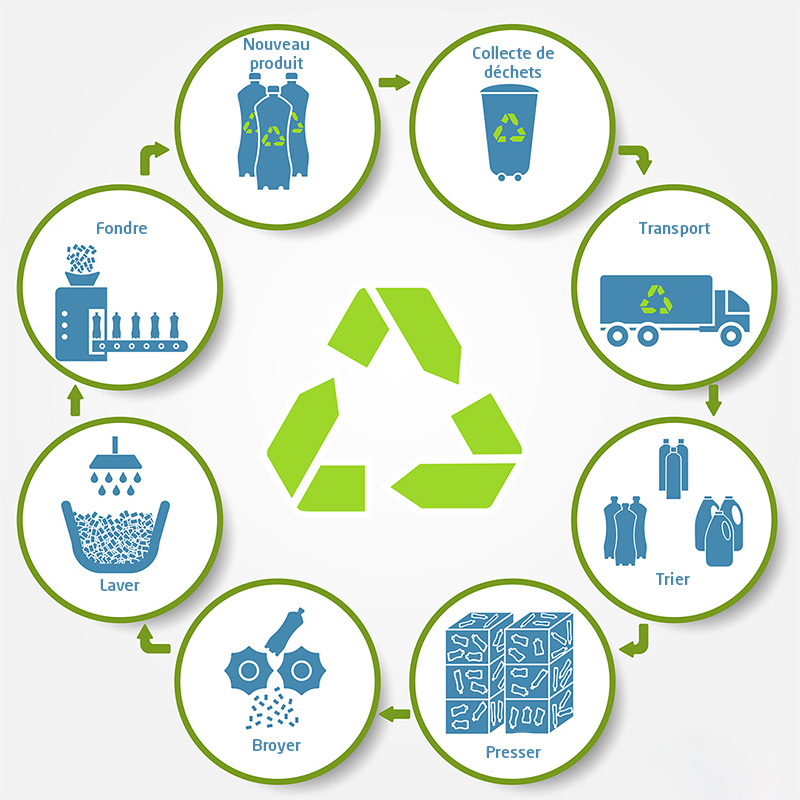
5. How can bioplastics be recycled
In addition to petroleum, there are also plastics made from biological resources, such as plants. Unlike traditional plastics, these biological variants are more easily degradable and renewable. Polylactic acid, or PLA, is one example.4 PLA is made from plant material (e.g. reed or corn) that renews itself each season. In theory, these resources are therefore inexhaustible, and they absorb CO2 from the air to grow. Read more about the other benefits and applications of PLA.
Most products made from bioplastics are printed with one or more specific logos. Examples are the logo of TUV Austria or that of Kiemplant. Pending clear regulations, it is best to dispose of small quantities of bioplastics with general residual waste. An exception to this rule is bioplastics that explicitly state that they are “biobased”. This type of plastic has almost the same polymeric properties as standard plastic. This is why you can also sort them as standard plastic waste (SMP). Good to know: in large quantities, bioplastics can sometimes be collected separately by your regional waste collection company. It is best to ask them about this.
6. Additional figures and facts on plastics
- The first synthetic material was invented in 1907 by the Belgian-American chemist Leo Baekeland. His invention was named “Bakelite”. However, it was not until the Second World War that plastics were widely used, such as in cars and artillery.
- By 2030, the EU wants member states to recycle 55% of all plastic packaging on the market. In Belgium, in 2019, we recycled about 40% of household plastic waste and about 54% of industrial plastic waste.
- The word plastic is actually an abbreviation. It comes from “thermoplastic”, which refers to the fact that this material can be deformed by heat.²
- PET recycling requires up to 60% less energy than producing new PET. 5
- Plastic bottles are getting lighter. In 1971, a 1.5-litre bottle of SPA Queen weighed 56.6g. In 2013, the same bottle weighed just 28.5g. New technologies have therefore enabled manufacturers to make bottles of the same quality using less material.5
- Plastic production has grown exponentially over the past 65 years. From 1.5 million tonnes in 1950 to 322 million tonnes in 2015. 5
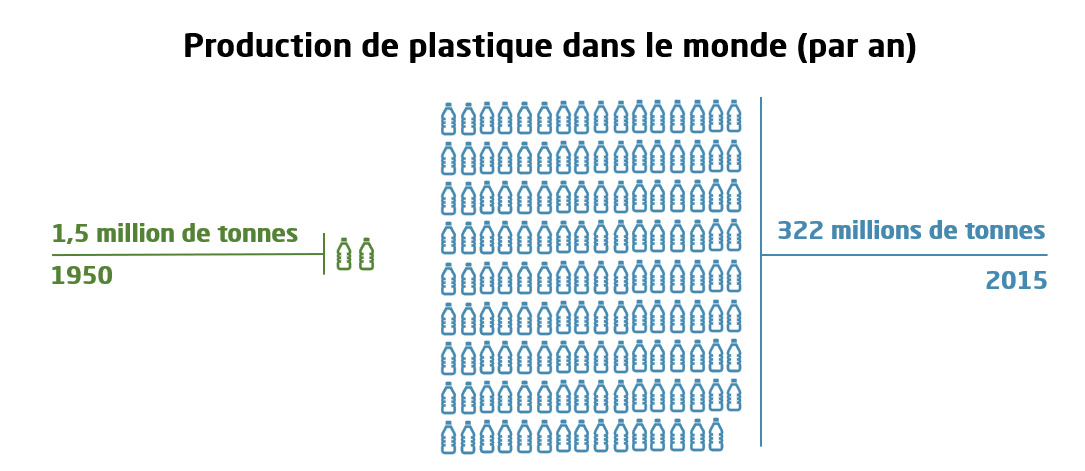
Sources:
1www.weekend.knack.be/lifestyle/maatschappij/de-wereld-van-plastics-in-cijfers-van-de-verpakkingsindustrie-tot-in-de-kledingkast/
2 www.iksorteerinmijnbedrijf.be/hoe-goed-sorteren/plastic-en-piepschuim/
3 www.fostplus.be/nl/sorteren-recycleren/alles-over-recyclage/pmd-recycleren/
4 www.eoswetenschap.eu/technologie/bioplastics-een-primer/
5 www.europarl.europa.eu/news/nl/headlines/society/20181212STO21610/plastic-afval-en-recycling-in-de-eu-feiten-en-cijfers/











